8301
Jokes Majaak / Re: ਜੇ ਗਵਾਢੀਆਂ ਦੀ ਕੁੜੀ ਤੈਨੂੰ ਵੀਰਾ ਕਹਿ ਗਈ
« on: March 28, 2011, 09:20:08 AM »
veere wala kann hi band kardange
|
This section allows you to view all posts made by this member. Note that you can only see posts made in areas you currently have access to. 8301
Jokes Majaak / Re: ਜੇ ਗਵਾਢੀਆਂ ਦੀ ਕੁੜੀ ਤੈਨੂੰ ਵੀਰਾ ਕਹਿ ਗਈ« on: March 28, 2011, 09:20:08 AM »
veere wala kann hi band kardange
8302
Shayari / ਕੁਝ ਤਾਂ ਸਾਨੂੰ ਛੱਡ ਚੁਕੇ..« on: March 28, 2011, 09:07:51 AM »
ਸਾਨੂੰ ਪਤਾ ਅਸੀ ਲਾਇਕ ਨੀ ਕਿਸੇ ਦੀ ਯਾਰੀ ਦੇ..
ਤਾਂਹਿਓ ਤਾਂ ਹਰ ਪਾਸਿਓ ਜਾਂਦੇ ਹਮੇਸ਼ਾ ਨਕਾਰੀ ਦੇ.. ਸਾਡੀ ਚੁੱਪ ਹੀ ਸਾਡੀ ਬਦਨਾਮੀ ਦਾ ਕਾਰਣ ਬਣੀ. ਤਾਂਹਿਓ ਤਾਂ ਸਿਰ ਹਰ ਇਲਜਾਮ ਧੌਖੇਦਾਰੀ ਦੇ… ਇਕਲੇ ਆਏ.. ਇਕਲੇ ਜਾਣਾ ਹੁਣ ਏ ਸੌਚ ਕੇ ਪਲ ਗੁਜਾਰੀ ਦੇ… ਕੁਝ ਤਾਂ ਸਾਨੂੰ ਛੱਡ ਚੁਕੇ.. ਕੁਝ ਛੱਡਣ ਦੀ ਵਿਚ ਤਿਆਰੀ ਦੇ… =((=(( 8303
Jokes Majaak / Re: thodi maa bhen ik kar deaangi« on: March 28, 2011, 08:30:45 AM »
:D: EDA TA WAISE SANDHU DI GHARWALI HI KEH SAKDI WA ESNU :laugh: :laugh:
8304
Shayari / Re: bus ek vaar oh kehde k tere ha,« on: March 28, 2011, 08:29:48 AM »
HAHA ..NAI MAIN EHNA SIYAPIA CH PAINDA HI NAHI ,,,,TERE NAAL HI KOI WADHA DHOKHA HOYA LAGDA
nai nai mai apni nai sekhon 22 teri gal kari c lol 8306
Jokes Majaak / Re: Shortest poem in the world« on: March 28, 2011, 08:26:36 AM »
:D: :D: :D: :D: HAHAHA
8307
Jokes Majaak / Re: keh c na read na kar....panga ta jaror laoge punjabi jo hoe« on: March 28, 2011, 08:26:06 AM »
HJE TA HOR BATHERE AUNGE ,,KAYI TA JHATI MAARKE BHJ JANDE NE
8308
Shayari / Re: lang jai na rut sajna tere mere pyar di,,,,,,« on: March 28, 2011, 08:25:33 AM »
KYA BAATAN NE
8309
PJ Games / Re: "How will u react if d person abv says.."I hate u"« on: March 28, 2011, 08:24:23 AM »
GOLI MAARKE BANDA MAAR DIANA OH
8310
Jokes Majaak / Re: ਜੇ ਗਵਾਢੀਆਂ ਦੀ ਕੁੜੀ ਤੈਨੂੰ ਵੀਰਾ ਕਹਿ ਗਈ« on: March 28, 2011, 08:23:04 AM »
HAHA
8311
News Khabran / Re: IMAGES DAT CHANGED THE WORLD« on: March 28, 2011, 08:22:23 AM »
YEAH U HVE SEEN THEM .BUT NOT ALL OF THEM IN SINGLE FORUM
Seen some of these pictures. 8312
News Khabran / Re: IMAGES DAT CHANGED THE WORLD« on: March 28, 2011, 06:49:15 AM » On December 3, 1984, a Union Carbide Corporation pesticide plant in Bhopal leaked around 32 tons of toxic gases, including methyl isocyanate gas which led to the worst industrial disaster to date. The official death toll was initially recorded around 5,000. Many figures suggest that 18,000 died within two weeks, and it is estimated that around 8,000 have died since then of gas-poisoning-related diseases. The Greenpeace organization cites a total casualty figure of 20,000 as its own conservative estimate. The Bhopal disaster is often cited as the world's worst industrial disaster. December 3 is annually observed as the official day of mourning, and every year, all government offices in Bhopal remain closed on this day. 8313
News Khabran / Re: PHOTOS DAT CHANGED THE WORLD« on: March 28, 2011, 06:41:48 AM »
Phan Thị Kim Phúc [1972]
Phan Thị Kim Phúc known as Kim Phuc (born 1963) was the subject of a famous photo from the Vietnam war. The picture shows her at about age nine running naked after being severely burned on her back by a napalm attack. 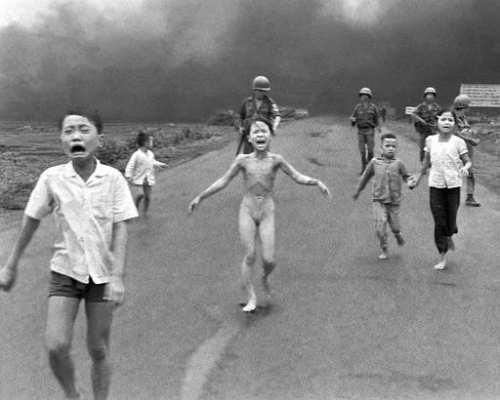 By Huỳnh Công Út Kent State [1970] The news that Richard Nixon was sending troops to Cambodia caused a chain of protests in the U.S. colleges. At Kent State the protest seemed more violent, some students even throwing rocks. In consequence, The Ohio National Guard was called to calm things down, but the events got out of hand and they started shooting. Some of the victims were simply walking to school. The photo shows 14-year-old Mary Ann Vecchio kneeling over the body of Jeffrey Miller who had been shot by the Ohio National Guard moments earlier. 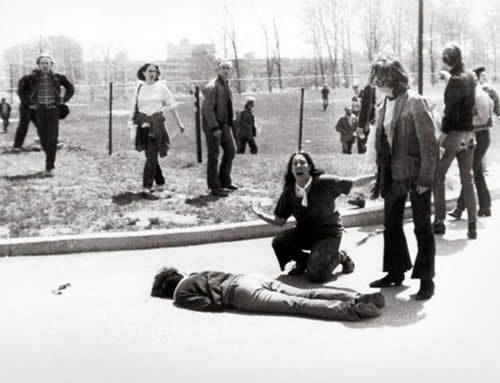 By John Paul Filo Tiananmen Square [1989] This is the picture of a student/man going to work who has just had enough. The days leading up to this event thousands of protesters and innocent by standers were killed by their own government because the Chinese people wanted more rights. He tries to stop the tanks in Tiananmen Square by standing in front of them and blocking them from passing, the tank driver didn't crush the man with the bags as a group of unknown people came and dragged him away, we still don't know if the man is alive or dead as the Chinese government executed many of the protesters involved. China is still controlled by a communist regime. There are two well know photos taken of the protester by two different photojournalist, so I thought I would show both images and give both photographer credit for there work as many people think that both images where taken by the same person.  By Stuart Franklin 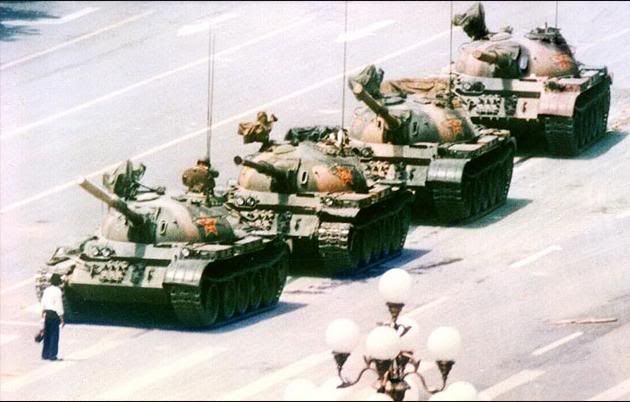 By Jeff Widener By Jeff Widener
8314
News Khabran / Re: IMAGES DAT CHANGED THE WORLD« on: March 28, 2011, 06:38:07 AM »
Misery in Darfur [2004]
It's an image which depicts a depressed, shoulders-down figure of a child in a cluster of what remains of her family. The very weather-beaten arm of her mother goes over her left shoulder and there are the very small weather-beaten hands of the child, who is about five or six, clinging on to this one piece of security that she has, which is the weather-beaten hand of her mother. The mother is not in the image, she's in the background. But then slightly further in the background you see the other hands of her brothers and sisters as they wait in this village. 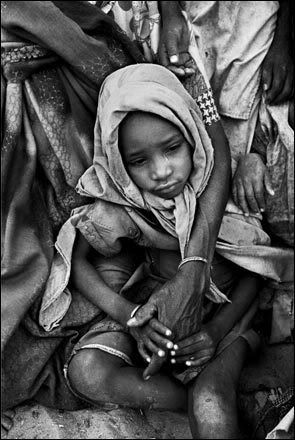 By Marcus Bleasdale Tragedy in Oklahoma [1995] The fireman has taken the time to remove his gloves before receiving this infant from the policeman. Anyone who knows anything about firefighters know that their gloves are very rough and abrasive and to remove these is like saying I want to make sure that I am as gentle and as compassionate as I can be with this infant that I don't know is dead or alive. The fireman is just cradling this infant with the utmost compassion and caring. He is looking down at her with this longing, almost to say with his eyes: "It's going to be OK, if there's anything I can do I want to try to help you." He doesn't know that she has already passed away.  By Chris Porter How Life Begins [1965] In 1957 he began taking pictures with an endoscope, an instrument that can see inside a body cavity, but when Lennart Nilsson presented the rewards of his work to LIFE's editors several years later, they demanded that witnesses confirm that they were seeing what they thought they were seeing. Finally convinced, they published a cover story in 1965 that went on for 16 pages, and it created a sensation. Then, and over the intervening years, Nilsson's painstakingly made pictures informed how humanity feels about . . . well, humanity. They also were appropriated for purposes that Nilsson never intended. Nearly as soon as the 1965 portfolio appeared in LIFE, images from it were enlarged by right-to-life activists and pasted to placards. 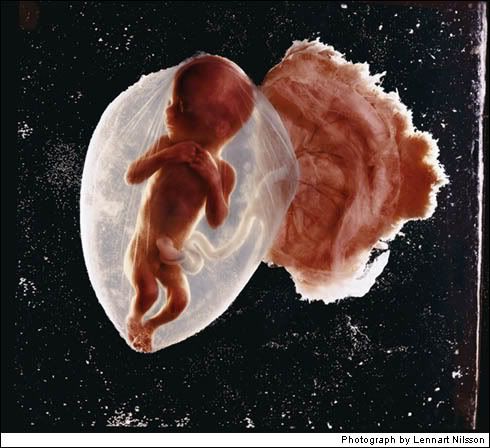 By Lennart Nilsson 8315
News Khabran / Re: IMAGES DAT CHANGED THE WORLD« on: March 28, 2011, 06:36:29 AM »
Migrant Mother [1936]
For many, this picture of Florence Owens Thompson (age 32) represents the Great Depression. She was the mother of 7 and she struggled to survive with her kids catching birds and picking fruits. Dorothea Lange took the picture after Florence sold her tent to buy food for her children. She made the first page of major newspapers all over the country and changed people's conception about migrants. 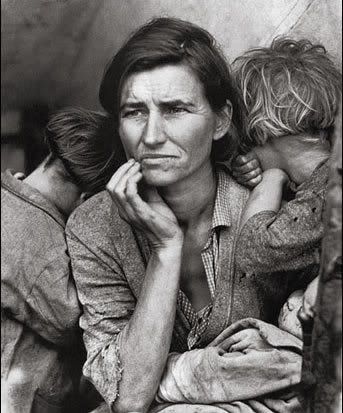 By Dorothea Lange Omayra Sánchez [1985] Red Cross rescue workers had apparently repeatedly appealed to the government for a pump to lower the water level and for other help to free the girl. Finally rescuers gave up and spent their remaining time with her, comforting her and praying with her. She died of exposure after about 60 hours. 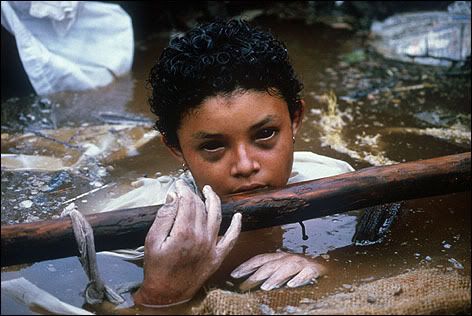 By Frank Fournier A vulture watches a starving child [1993] The prize-winning image: A vulture watches a starving child in southern Sudan, March 1, 1993. Carter's winning photo shows a heart-breaking scene of a starving child collapsed on the ground, struggling to get to a food center during a famine in the Sudan in 1993. In the background, a vulture stalks the emaciated child. Carter was part of a group of four fearless photojournalists known as the "Bang Bang Club" who traveled throughout South Africa capturing the atrocities committed during apartheid. Haunted by the horrific images from Sudan, Carter committed suicide in 1994 soon after receiving the award. 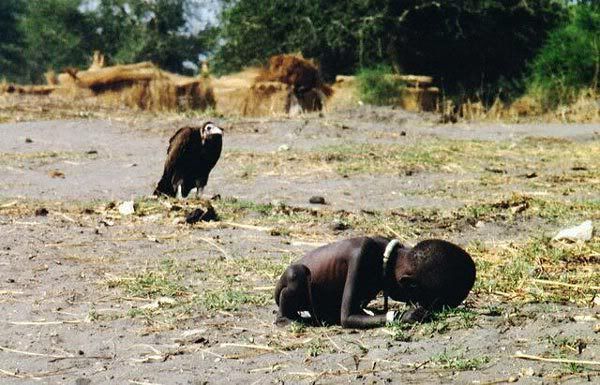 By Kevin Carter 8316
News Khabran / Re: IMAGES DAT CHANGED THE WORLD« on: March 28, 2011, 06:35:30 AM »
The Falling Man [2001]
The powerful and controversial photograph provoked feelings of anger, particularly in the United States, in the immediate aftermath of the September 11 attacks. The photo ran only once in many American newspapers because they received critical and angry letters from readers who felt the photo was exploitative, voyeuristic, and disrespectful of the dead. This led to the media's self-censorship of the photograph, preferring instead to print photos of acts of heroism and sacrifice. Drew commented about the varying reactions, saying, "This is how it affected people's lives at that time, and I think that is why it's an important picture. I didn't capture this person's death. I captured part of his life. This is what he decided to do, and I think I preserved that."9/11: The Falling Man ends suggesting that this picture was not a matter of the identity behind the man, but how he symbolized the events of 9/11. 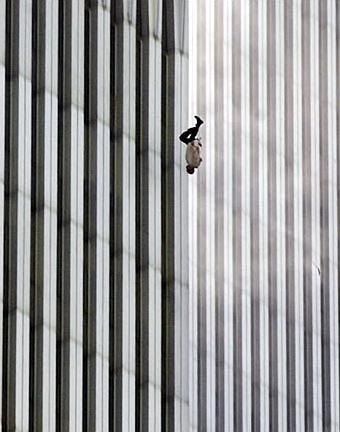 By Richard Drew U.S. Marines raising the flag on Iwo Jima [1945] Raising the Flag on Iwo Jima is a historic photograph taken on February 23, 1945, by Joe Rosenthal. It depicts five United States Marines and a U.S. Navy corpsman raising the flag of the United States atop Mount Suribachi during the Battle of Iwo Jima in World War II. The photograph was extremely popular, being reprinted in thousands of publications. Later, it became the only photograph to win the Pulitzer Prize for Photography in the same year as its publication, and ultimately came to be regarded as one of the most significant and recognizable images of the war, and possibly the most reproduced photograph of all times. 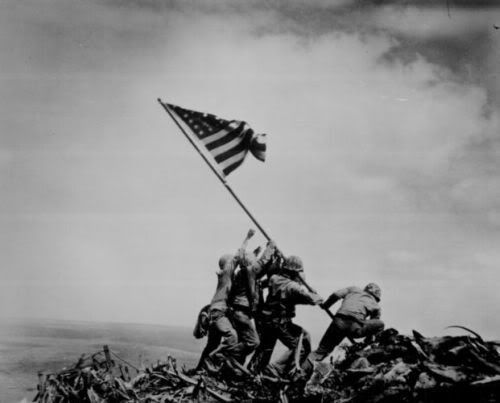 By Joe Rosenthal Lunch atop a Skyscraper [1932] Lunch atop a Skyscraper (New York Construction Workers Lunching on a Crossbeam) is a famous photograph taken by Charles C. Ebbets during construction of the GE Building at Rockefeller Center in 1932. The photograph depicts 11 men eating lunch, seated on a girder with their feet dangling hundreds of feet above the New York City streets. Ebbets took the photo on September 29, 1932, and it appeared in the New York Herald Tribune in its Sunday photo supplement on October 2. Taken on the 69th floor of the GE Building during the last several months of construction, the photo Resting on a Girder shows the same workers napping on the beam.  Here's a rare image by the same photographer showing the workers sleeping on the crossbeam.  8317
News Khabran / Re: IMAGES DAT CHANGED THE WORLD« on: March 28, 2011, 06:34:23 AM » Nagasaki [1945] This is the picture of the "mushroom cloud" showing the enormous quantity of energy. The first atomic bomb was released on August 6 in Hiroshima (Japan) and killed about 80,000 people. On August 9 another bomb was released above Nagasaki. The effects of the second bomb were even more devastating - 150,000 people were killed or injured. But the powerful wind, the extremely high temperature and radiation caused enormous long term damage. 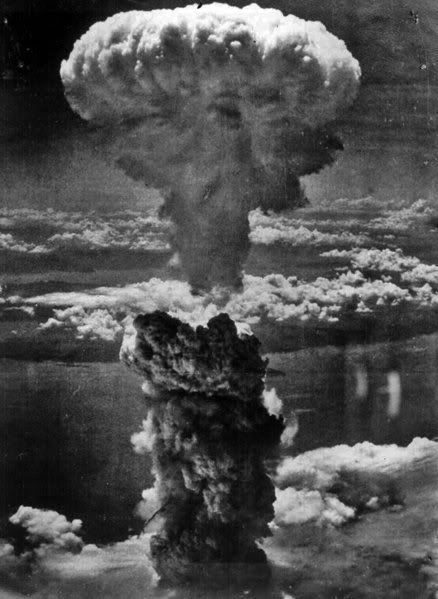 Hiroshima, Three Weeks After the Bomb [1945] Americans -- and everyone -- had heard of the bomb that "leveled" Hiroshima, but what did that mean? When the aerial photography was published, that question was answered.  And here is a ground view of the destruction. 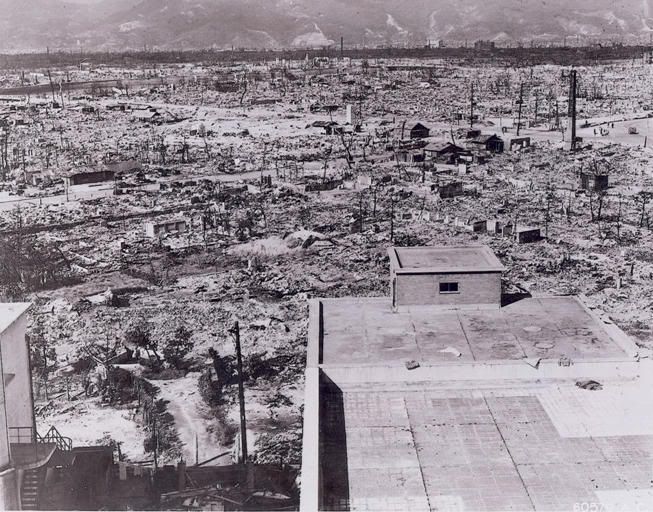 Dead on the Beach [1943] Haunting photograph of a beach in Papua New Guinea on September 20, 1943, the magazine felt compelled to ask in an adjacent full-page editorial, "Why print this picture, anyway, of three American boys dead upon an alien shore?" Among the reasons: "words are never enough . . .  By George Strock 8318
News Khabran / Re: IMAGES DAT CHANGED THE WORLD« on: March 28, 2011, 06:33:18 AM » ThÃ*ch Quảng Äức [1963]
ThÃ*ch Quảng Ãức was a Vietnamese Buddhist monk who burned himself to death at a busy Saigon intersection on June 11, 1963. His act of self-immolation, which was repeated by others, was witnessed by David Halberstam, a New York Times reporter, who wrote:
 ByMalcolm Browne Portrait of Winston Churchill [1941] This photograph was taken by Yousuf Karsh, a Canadian photographer, when Winston Churchill came to Ottawa. The portrait of Churchill brought Karsh international fame. It is claimed to be the most reproduced photographic portrait in history. It also appeared on the cover of Life magazine. 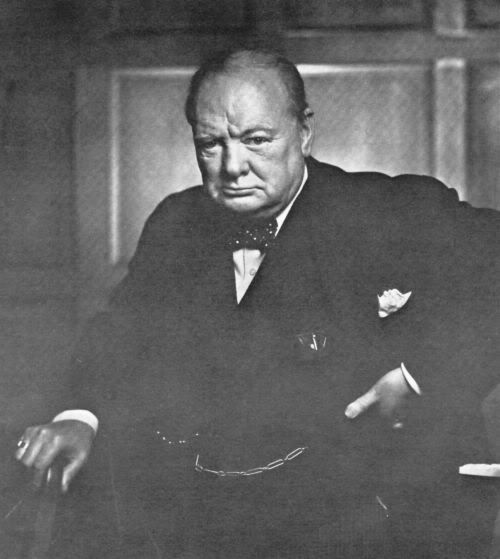 By Yousuf Karsh Albert Einstein [1951] Albert Einstein is probably one of the most popular figures of all times. He is considered a genius because he created the Theory of Relativity, and so, challenged Newton's laws, that were the basis of everything known in physics until the beginning of the 20th century. But, as a person, he was considered a beatnik, and this picture, taken on March 14, 1951 proves that. 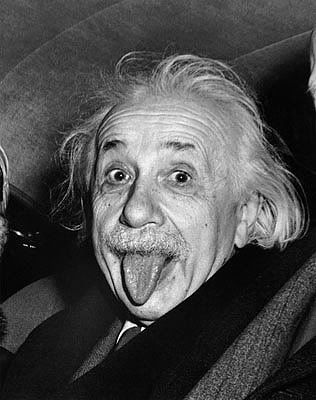 By Arthur Sasse 8319
News Khabran / Re: IMAGES DAT CHANGED THE WORLD« on: March 28, 2011, 06:31:06 AM »
Phan Thị Kim Phúc [1972]
Phan Thị Kim Phúc known as Kim Phuc (born 1963) was the subject of a famous photo from the Vietnam war. The picture shows her at about age nine running naked after being severely burned on her back by a napalm attack. By Huỳnh Công Út Kent State [1970] The news that Richard Nixon was sending troops to Cambodia caused a chain of protests in the U.S. colleges. At Kent State the protest seemed more violent, some students even throwing rocks. In consequence, The Ohio National Guard was called to calm things down, but the events got out of hand and they started shooting. Some of the victims were simply walking to school. The photo shows 14-year-old Mary Ann Vecchio kneeling over the body of Jeffrey Miller who had been shot by the Ohio National Guard moments earlier. By John Paul Filo Tiananmen Square [1989] This is the picture of a student/man going to work who has just had enough. The days leading up to this event thousands of protesters and innocent by standers were killed by their own government because the Chinese people wanted more rights. He tries to stop the tanks in Tiananmen Square by standing in front of them and blocking them from passing, the tank driver didn't crush the man with the bags as a group of unknown people came and dragged him away, we still don't know if the man is alive or dead as the Chinese government executed many of the protesters involved. China is still controlled by a communist regime. There are two well know photos taken of the protester by two different photojournalist, so I thought I would show both images and give both photographer credit for there work as many people think that both images where taken by the same person. By Stuart Franklin By Jeff Widener 8320
News Khabran / IMAGES DAT CHANGED THE WORLD« on: March 28, 2011, 06:29:56 AM »Images That Changed The World ? __________________...>>...>><...<<... Some people might be offended or upset by these images but this isn't my intentions I just want it to be thought provoking and enlightening, and for people to talk about the past and to never forget, because we need to learn from past events other wise we will keep repeating history. Execution of a Viet Cong Guerrilla [1968] This picture was shot by Eddie Adams who won the Pulitzer prize with it. The picture shows Nguyen Ngoc Loan, South Vietnam's national police chief executing a prisoner who was said to be a Viet Cong captain. Once again the public opinion was turned against the war. 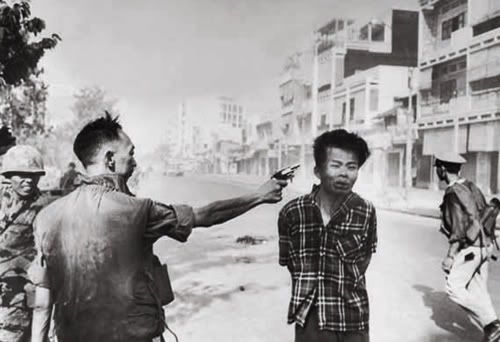 By Eddie Adams Soweto Uprising [1976] It was a picture that got the world's attention: A frozen moment in time that showed 13-year-old Hector Peterson dying after being struck down by a policeman's bullet. 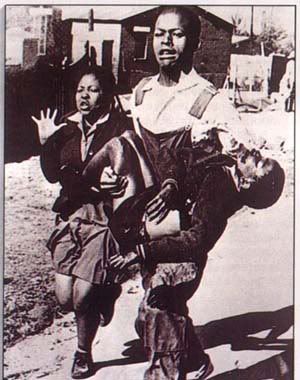 By Sam Nzima By Sam NzimaHazel Bryant [1957]It was the fourth school year since segregation had been outlawed by the Supreme Court. Things were not going well, and some southerners accused the national press of distorting matters. This picture, however, gave irrefutable testimony, as Elizabeth Eckford strides through a gantlet of white students, including Hazel Bryant (mouth open the widest), on her way to Little Rock's Central High. 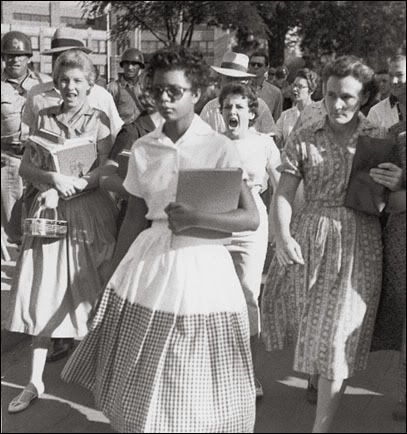 By Will Counts |